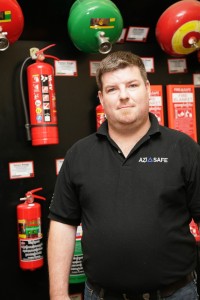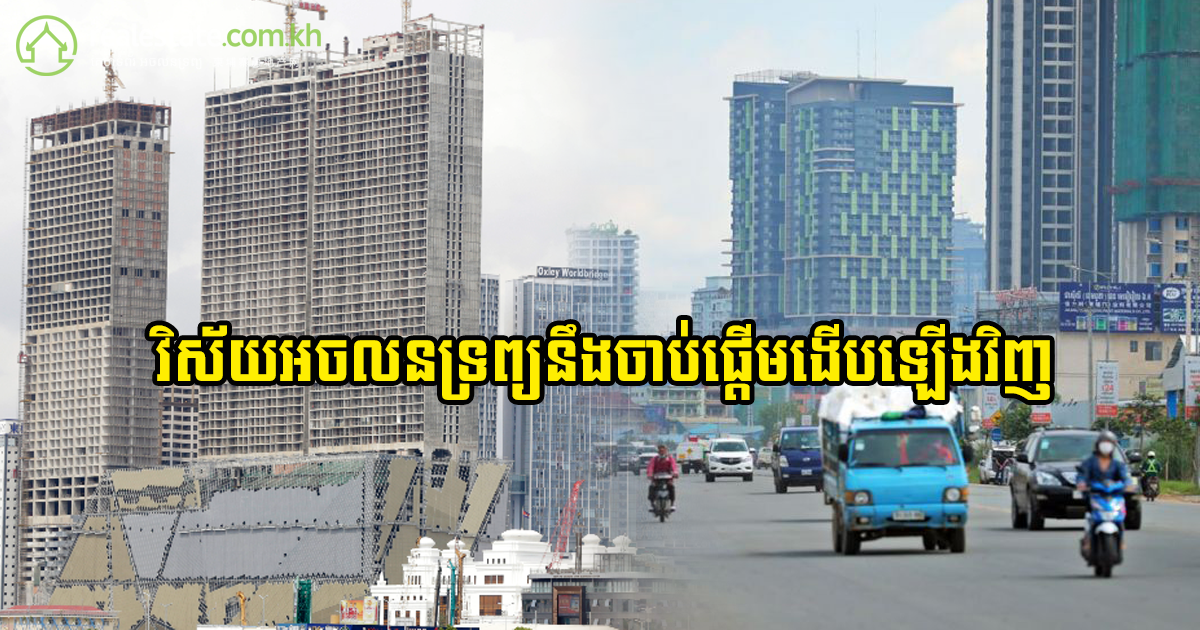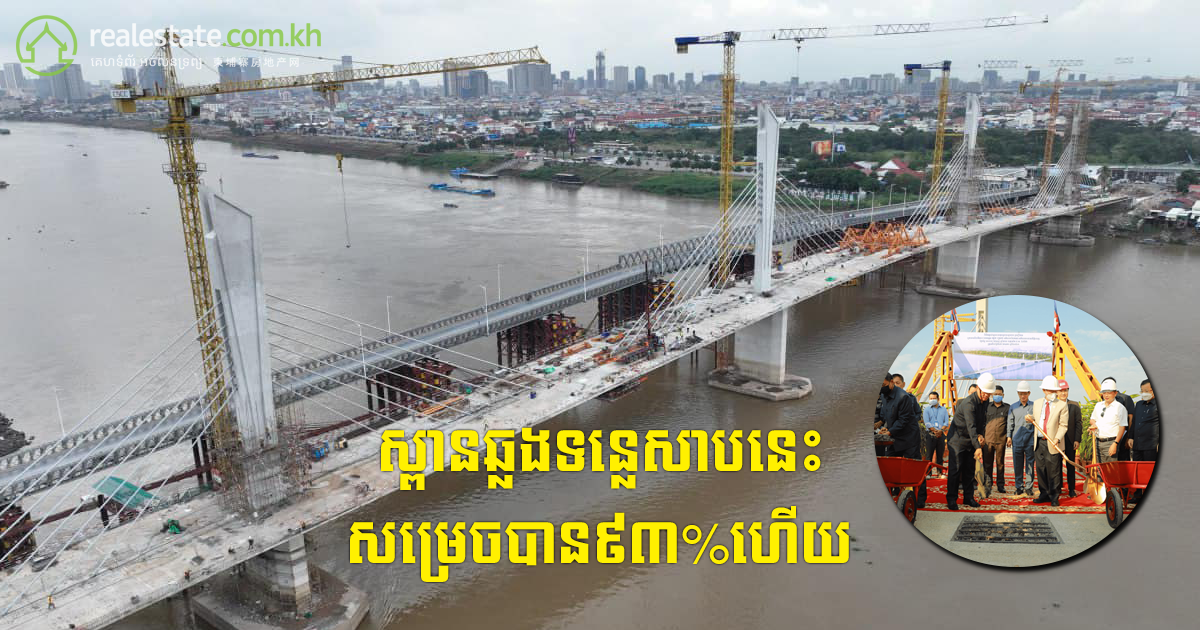Currently, the private sector is the only real force bringing fire prevention and response considerations into new building developments in Cambodia, says Paul Hurford, Managing Director of Azisafe Cambodia. Yet, even these standards can prove problematic in the Cambodian firefighting environment.
[caption id="attachment_77921" align="aligncenter" width="540"]

Hong Menea, Phnom Penh Post[/caption]
The Fire Prevention Law, which is currently in force in Cambodia, is an overarching document that represents a cross between a fire safety law, a fire service law and a catalogue of emergency response standards. “It reflects a law that was intended to have specific regulations created under it,” says Hurford, “yet these regulations have yet to be created.”This means the law currently has no direct compliance mechanisms, and little practical application.
[caption id="attachment_77915" align="alignleft" width="200"]

Hong Menea, Phnom Penh Post[/caption]
Many new buildings currently being erected throughout Cambodia claim to bring international standards of fire safety, fully integrated into the new building’s design. However, Hurford notes, while Singaporean, Malaysian and Hong Kong fire standards are increasingly integrated into new developments, these countries have some of the best fire services in the world in regards to response capabilities and external fire infrastructure.
“Although a new development may incorporate international standards in regards to fire prevention within its design – if the local fire service arrives and their equipment has different couplings to those installed inside the building, these international standard systems are immediately useless.”
The same issue occurs when the response team is not trained in using these internal firefighting systems. For these reasons, to achieve worthwhile fire design, emphasis must lie on emergency response mechanisms related to each building, and appropriate training for first response teams for that building, says Hurford. This means compatibility with available local firefighting equipment, but also a strong emphasis on training and response protocols. Some new developments are taking matters into their own hands in this regard, employing and training in-house firefighting teams. Hurford agrees with this measure, as “realistically, each development must be self-sustainable if they want to control fire risk in Cambodia.” This includes internal systems capable of fighting the fire, such as sprinklers, alarms, and appropriate extinguishers, but always combined with emergency protocols, training and education. Hurford notes that for developers, given the potential risk to their investment – “no one is really doing enough.”
Meanwhile, response capabilities of the Cambodian fire service are limited by an equipment and skills gap.
The Cambodian fire service exists within a culture of donation in regards to equipment, suggests Hurford -as internal funding is seldom afforded, there is an expectation that equipment will be donated. But this raises issues when that donated equipment does not suit the Cambodian firefighting environment. For example, says Hurford, the Japanese have donated many fire engines to the Cambodian fire service. While the equipment donated is of a high standard, it is suited to a Japanese firefighting environment where fire hydrants are always readily available.This means the trucks only have very small water tanks. In Cambodia,there are very limited hydrants available and, therefore, for a firefighting team to be successful, it must carry all necessary water to the scene of fire. “This is just one example,” notes Hurford “but it is symbolic of the Cambodian fire service’s equipment problem.”
[caption id="attachment_77925" align="alignleft" width="350"]

Hong Menea, Phnom Penh Post[/caption]
Hurford suggests that the only way for the Cambodian fire service to move forward is to create standards suitable to Cambodia’s needs, tailored to Cambodia’s means – then train across the board on these standards. A few groups are currently trying to help with this, such as Eurocham’s current work on the new Construction Law, and the IBCs involvement with the Building Standards and Fire Safety Committee – both of which are working alongside the Government to move from a reactive state of affairs, toward reaching standardized fire safety mechanisms that will really save lives and property.
Hurford is currently involved with the formation of the Emergency/Fire Response Working Group, set to meet for the first time this August. This working group shall bring together all government departments involved in emergency response mechanisms, along with private sector members with experience in the field of emergency response. The group shall conduct mutual trainingexercises for its members, and try to standardize training and communication procedures throughout the country.
While this group is still very much in its infancy, it has already been endorsed by the Police Commissioner and Ministry of Interior. Hurford notes that everyone trying to work together on this is in itself a forward step.real estat

 Hong Menea, Phnom Penh Post[/caption]
The Fire Prevention Law, which is currently in force in Cambodia, is an overarching document that represents a cross between a fire safety law, a fire service law and a catalogue of emergency response standards. “It reflects a law that was intended to have specific regulations created under it,” says Hurford, “yet these regulations have yet to be created.”This means the law currently has no direct compliance mechanisms, and little practical application.
[caption id="attachment_77915" align="alignleft" width="200"]
Hong Menea, Phnom Penh Post[/caption]
The Fire Prevention Law, which is currently in force in Cambodia, is an overarching document that represents a cross between a fire safety law, a fire service law and a catalogue of emergency response standards. “It reflects a law that was intended to have specific regulations created under it,” says Hurford, “yet these regulations have yet to be created.”This means the law currently has no direct compliance mechanisms, and little practical application.
[caption id="attachment_77915" align="alignleft" width="200"] Hong Menea, Phnom Penh Post[/caption]
Many new buildings currently being erected throughout Cambodia claim to bring international standards of fire safety, fully integrated into the new building’s design. However, Hurford notes, while Singaporean, Malaysian and Hong Kong fire standards are increasingly integrated into new developments, these countries have some of the best fire services in the world in regards to response capabilities and external fire infrastructure.
“Although a new development may incorporate international standards in regards to fire prevention within its design – if the local fire service arrives and their equipment has different couplings to those installed inside the building, these international standard systems are immediately useless.”
The same issue occurs when the response team is not trained in using these internal firefighting systems. For these reasons, to achieve worthwhile fire design, emphasis must lie on emergency response mechanisms related to each building, and appropriate training for first response teams for that building, says Hurford. This means compatibility with available local firefighting equipment, but also a strong emphasis on training and response protocols. Some new developments are taking matters into their own hands in this regard, employing and training in-house firefighting teams. Hurford agrees with this measure, as “realistically, each development must be self-sustainable if they want to control fire risk in Cambodia.” This includes internal systems capable of fighting the fire, such as sprinklers, alarms, and appropriate extinguishers, but always combined with emergency protocols, training and education. Hurford notes that for developers, given the potential risk to their investment – “no one is really doing enough.”
Meanwhile, response capabilities of the Cambodian fire service are limited by an equipment and skills gap.
The Cambodian fire service exists within a culture of donation in regards to equipment, suggests Hurford -as internal funding is seldom afforded, there is an expectation that equipment will be donated. But this raises issues when that donated equipment does not suit the Cambodian firefighting environment. For example, says Hurford, the Japanese have donated many fire engines to the Cambodian fire service. While the equipment donated is of a high standard, it is suited to a Japanese firefighting environment where fire hydrants are always readily available.This means the trucks only have very small water tanks. In Cambodia,there are very limited hydrants available and, therefore, for a firefighting team to be successful, it must carry all necessary water to the scene of fire. “This is just one example,” notes Hurford “but it is symbolic of the Cambodian fire service’s equipment problem.”
[caption id="attachment_77925" align="alignleft" width="350"]
Hong Menea, Phnom Penh Post[/caption]
Many new buildings currently being erected throughout Cambodia claim to bring international standards of fire safety, fully integrated into the new building’s design. However, Hurford notes, while Singaporean, Malaysian and Hong Kong fire standards are increasingly integrated into new developments, these countries have some of the best fire services in the world in regards to response capabilities and external fire infrastructure.
“Although a new development may incorporate international standards in regards to fire prevention within its design – if the local fire service arrives and their equipment has different couplings to those installed inside the building, these international standard systems are immediately useless.”
The same issue occurs when the response team is not trained in using these internal firefighting systems. For these reasons, to achieve worthwhile fire design, emphasis must lie on emergency response mechanisms related to each building, and appropriate training for first response teams for that building, says Hurford. This means compatibility with available local firefighting equipment, but also a strong emphasis on training and response protocols. Some new developments are taking matters into their own hands in this regard, employing and training in-house firefighting teams. Hurford agrees with this measure, as “realistically, each development must be self-sustainable if they want to control fire risk in Cambodia.” This includes internal systems capable of fighting the fire, such as sprinklers, alarms, and appropriate extinguishers, but always combined with emergency protocols, training and education. Hurford notes that for developers, given the potential risk to their investment – “no one is really doing enough.”
Meanwhile, response capabilities of the Cambodian fire service are limited by an equipment and skills gap.
The Cambodian fire service exists within a culture of donation in regards to equipment, suggests Hurford -as internal funding is seldom afforded, there is an expectation that equipment will be donated. But this raises issues when that donated equipment does not suit the Cambodian firefighting environment. For example, says Hurford, the Japanese have donated many fire engines to the Cambodian fire service. While the equipment donated is of a high standard, it is suited to a Japanese firefighting environment where fire hydrants are always readily available.This means the trucks only have very small water tanks. In Cambodia,there are very limited hydrants available and, therefore, for a firefighting team to be successful, it must carry all necessary water to the scene of fire. “This is just one example,” notes Hurford “but it is symbolic of the Cambodian fire service’s equipment problem.”
[caption id="attachment_77925" align="alignleft" width="350"] Hong Menea, Phnom Penh Post[/caption]
Hurford suggests that the only way for the Cambodian fire service to move forward is to create standards suitable to Cambodia’s needs, tailored to Cambodia’s means – then train across the board on these standards. A few groups are currently trying to help with this, such as Eurocham’s current work on the new Construction Law, and the IBCs involvement with the Building Standards and Fire Safety Committee – both of which are working alongside the Government to move from a reactive state of affairs, toward reaching standardized fire safety mechanisms that will really save lives and property.
Hurford is currently involved with the formation of the Emergency/Fire Response Working Group, set to meet for the first time this August. This working group shall bring together all government departments involved in emergency response mechanisms, along with private sector members with experience in the field of emergency response. The group shall conduct mutual trainingexercises for its members, and try to standardize training and communication procedures throughout the country.
While this group is still very much in its infancy, it has already been endorsed by the Police Commissioner and Ministry of Interior. Hurford notes that everyone trying to work together on this is in itself a forward step.real estat
Hong Menea, Phnom Penh Post[/caption]
Hurford suggests that the only way for the Cambodian fire service to move forward is to create standards suitable to Cambodia’s needs, tailored to Cambodia’s means – then train across the board on these standards. A few groups are currently trying to help with this, such as Eurocham’s current work on the new Construction Law, and the IBCs involvement with the Building Standards and Fire Safety Committee – both of which are working alongside the Government to move from a reactive state of affairs, toward reaching standardized fire safety mechanisms that will really save lives and property.
Hurford is currently involved with the formation of the Emergency/Fire Response Working Group, set to meet for the first time this August. This working group shall bring together all government departments involved in emergency response mechanisms, along with private sector members with experience in the field of emergency response. The group shall conduct mutual trainingexercises for its members, and try to standardize training and communication procedures throughout the country.
While this group is still very much in its infancy, it has already been endorsed by the Police Commissioner and Ministry of Interior. Hurford notes that everyone trying to work together on this is in itself a forward step.real estat





Comments